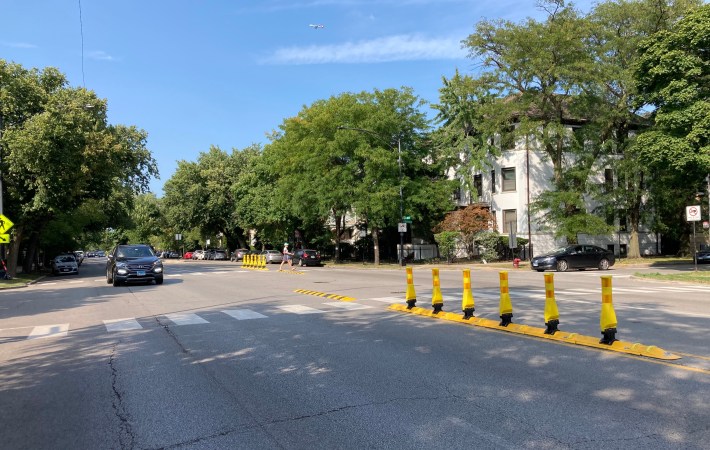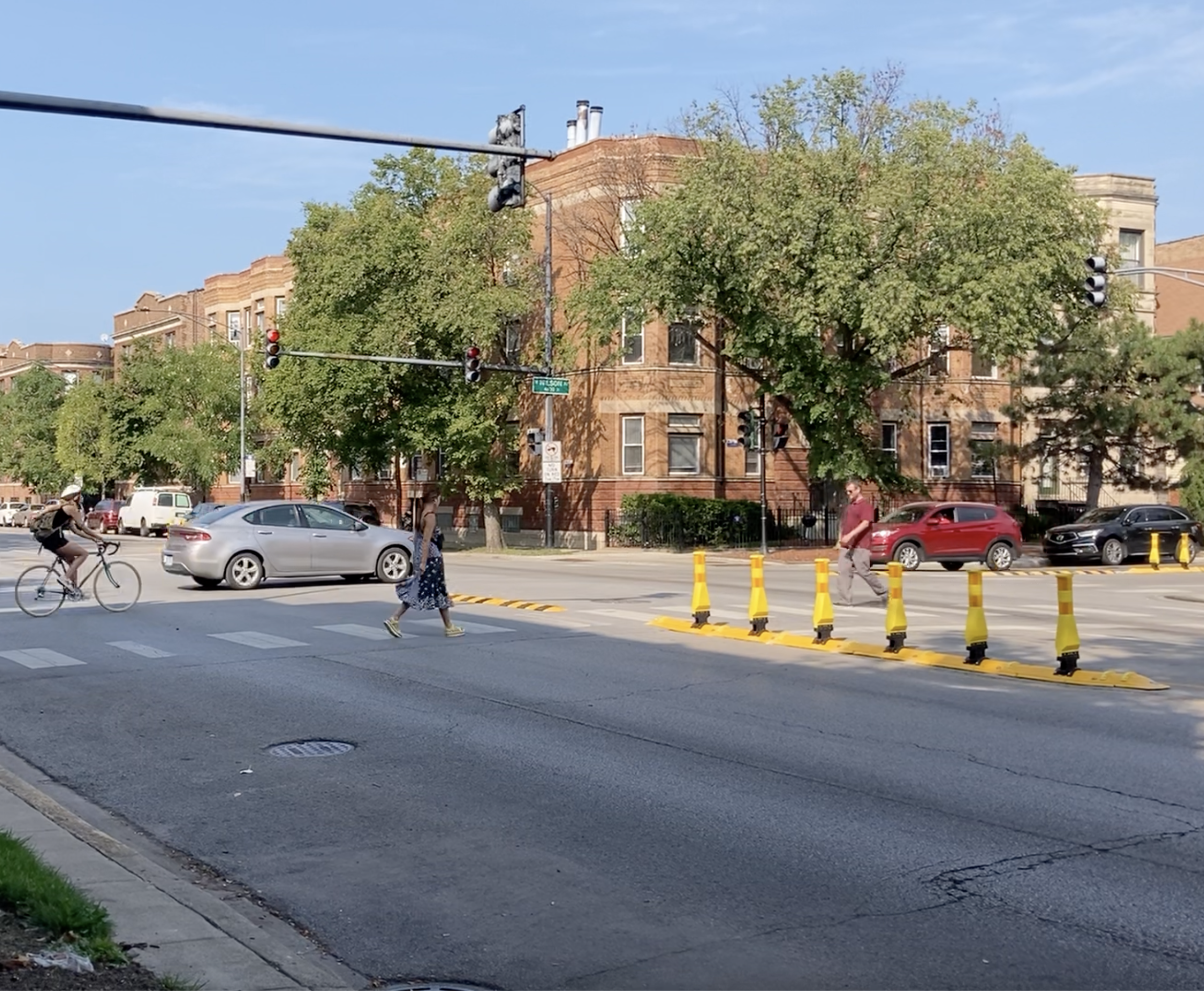Tragically, drivers failing to yield when making left turns, often because they're whipping around corners too fast, is a common cause of serious and deadly crashes. According to the Chicago Department of Transportation, 40 percent of cases where drivers seriously injured or killed people on foot between 2017 and 2021 involved left turns. Here are some examples of left-turn crashes that took the lives of vulnerable road users this year in Chicago.
- On September 8, 2022, Samuel Bell, 44, was riding an e-bike southeast on the 700 block of North Milwaukee in River West when an elderly Hyundai Elantra sedan driver made a left turn onto Huron Street, fatally striking Bell.
- On May 10, 2022, a left-turning van driver failed to yield to failed to yield to Berta Arroyo Salgado, 73, as she crossed the street in a crosswalk at Chicago Avenue and Paulina Street in West Town, killing the senior.
- On April 17, 2022, a left-turning sedan driver fatally struck Yehuala Melkama, 44, as she walked in a crosswalk at Hazel and Sunnyside avenues in Uptown.
- On March 17, 2022, a left-turning driver struck and killed Miriam M. Grande, 70, at Grand and Austin avenues in the Belmont Central neighborhood and fled the scene.
The city is taking steps to prevent these kinds of collisions by installing centerline "hardening" infrastructure, rubber speed bumps and flexible posts that force drivers to take left turns at a 90-degree angle, which slows them down. This strategy, called "Left Turn Traffic Calming" was first piloted in 2019 at five intersections on State Street between Hubbard and Ontario streets in River North. It's coming to 15 other junctions across the city this year, including four locations on Ashland Avenue (1600 W.) in the 47th Ward whether the black-and-yellow infrastructure has already been installed.

47th Ward alder Matt Martin told Streetsblog he asked for the treatments. "We have a good amount of pedestrian traffic up and down Ashland. We also have a lot of schools that are on either side, and we consistently hear from folks, especially in the fall when school goes back in session, that drivers are very aggressive when making turns, so we think that's a modest but meaningful step we can take to maintain improve pedestrian safety."
Here's the full list of intersections, which CDOT says have a history of left-turn crashes, slated to get this treatment in 2022:
- N. Ashland Ave. & W. Wilson Ave. (installed already)
- N. Ashland Ave. & W. Sunnyside Ave. (installed already)
- N. Ashland Ave. & W. Montrose Ave. (installed already)
- N. Ashland Ave. & W. Cullom Ave. (installed already)
- W. Grand Ave. & N. Austin Ave.
- W. Division Ave. & N. Rockwell St.
- W. Chicago Ave. & N. Leavitt St.
- W. Chicago Ave. & N. Oakley Ave.
- W. Chicago Ave. & N. Paulina St.
- W. 63rd St. & S. Kedzie Ave.
- W. 63rd St. & S. California Ave.
- W. 63rd St. & S. Western Ave.
- W. 71st St. & S. Halsted St.
- W. 71st St & S. Ashland Ave.
- W. 71st St & S. Damen Ave.
According to CDOT, LTTC encourages driver to take a safer route when making left turns, and by limiting the potential locations where motorists can drive across crosswalks, it reduces the size of the potential pedestrian conflict zone. Forcing drivers to make 90-degree turns also makes it easier for them to see people crossing the street, since their car frame may obstruct motorists field of vision on "softer" turns. CDOT says drivers of trucks and buses are allowed to drive over the speed bumps if need be.

CDOT studies found that after the department installed speed bumps and bollards on State Street, the percentage of drivers who yielded to pedestrians while turning at these five intersections increased from 80 percent to 95 percent.
At the end of this clip at Montrose and Ashland avenues, a few drivers make hard left turns (some of them after their light has turned red.)
Not everyone is a fan of this tactic though. Kyle Lucas, cofounder of the sustainable transportation advocacy organization Better Streets Chicago, noted on Twitter that the State Street infrastructure was quickly damaged by drivers. "I must say the way these have transformed the streetscape have made me feel so much safer as a pedestrian!" he wrote sarcastically. "Who needs wide sidewalks, Slow Streets, or plazas when you can have giant yellow plastic posts that say 'Look out don't get hit!'"

Still, from my observations on Ashland this afternoon, it does seem like the new infrastructure is causing drivers to slow down while taking left turns, and make them at a sharper angle. Hopefully that will translate to higher rates of motorists yielding to pedestrians, as CDOT says was the case on State, and fewer crashes.






